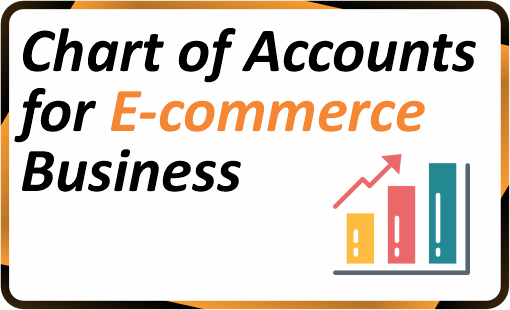A well-structured chart of accounts for ecommerce business is essential for tracking financial performance and maintaining organized bookkeeping. In this guide, we’ll cover the essentials for setting up a chart of accounts tailored to ecommerce needs, helping you stay on top of revenue, expenses, and profits.
What is a Chart of Accounts for ecommerce business?
A chart of accounts for ecommerce business categorizes transactions to provide a clear view of all financial activities. By setting up categories like “Sales Revenue,” “Cost of Goods Sold (COGS),” and “Marketing Expenses,” ecommerce businesses can track income, spending, and overall profitability more effectively. This structure makes financial reports insightful and ensures all important details are captured accurately.
Key Accounts to Include chart of accounts for ecommerce business
Sales Revenue
Track all income generated from sales channels like Amazon, eBay, or Shopify. Organizing by source is helpful for multi-channel businesses.
Cost of Goods Sold (COGS)
Include costs associated with purchasing or producing the products you sell. This directly impacts profitability and helps you assess gross margins.
Operating Expenses
Group expenses like advertising, software subscriptions, and shipping. This allows you to monitor where funds are allocated and adjust as needed.
Inventory
Reflects stock on hand, critical for inventory-heavy ecommerce businesses. This account tracks asset value before the product is sold.
Accounts Receivable/Payable
Ensures accurate tracking of payments due from customers and those owed to vendors, maintaining cash flow clarity.
Owner’s Equity
Represents the owner’s interest in the business, useful for monitoring overall financial health.
Getting Started with Plugbooks
To set up and customize your chart of accounts for ecommerce business, Plugbooks offers an intuitive interface and flexible features. You can create categories that align perfectly with your financial needs, enabling you to access clear financial insights. For more information on setting up an effective chart of accounts, visit our guide to Plugbooks’ accounting features.
Conclusion
Setting up a tailored chart of accounts in Plugbooks equips ecommerce businesses with the insights needed to make informed financial decisions. By organizing categories that capture all revenue, costs, and expenses, you can efficiently manage finances and understand your profitability. Plugbooks provides a simple, powerful way to keep your accounting on track.




2 thoughts on “Chart of Accounts for ecommerce Business Success”